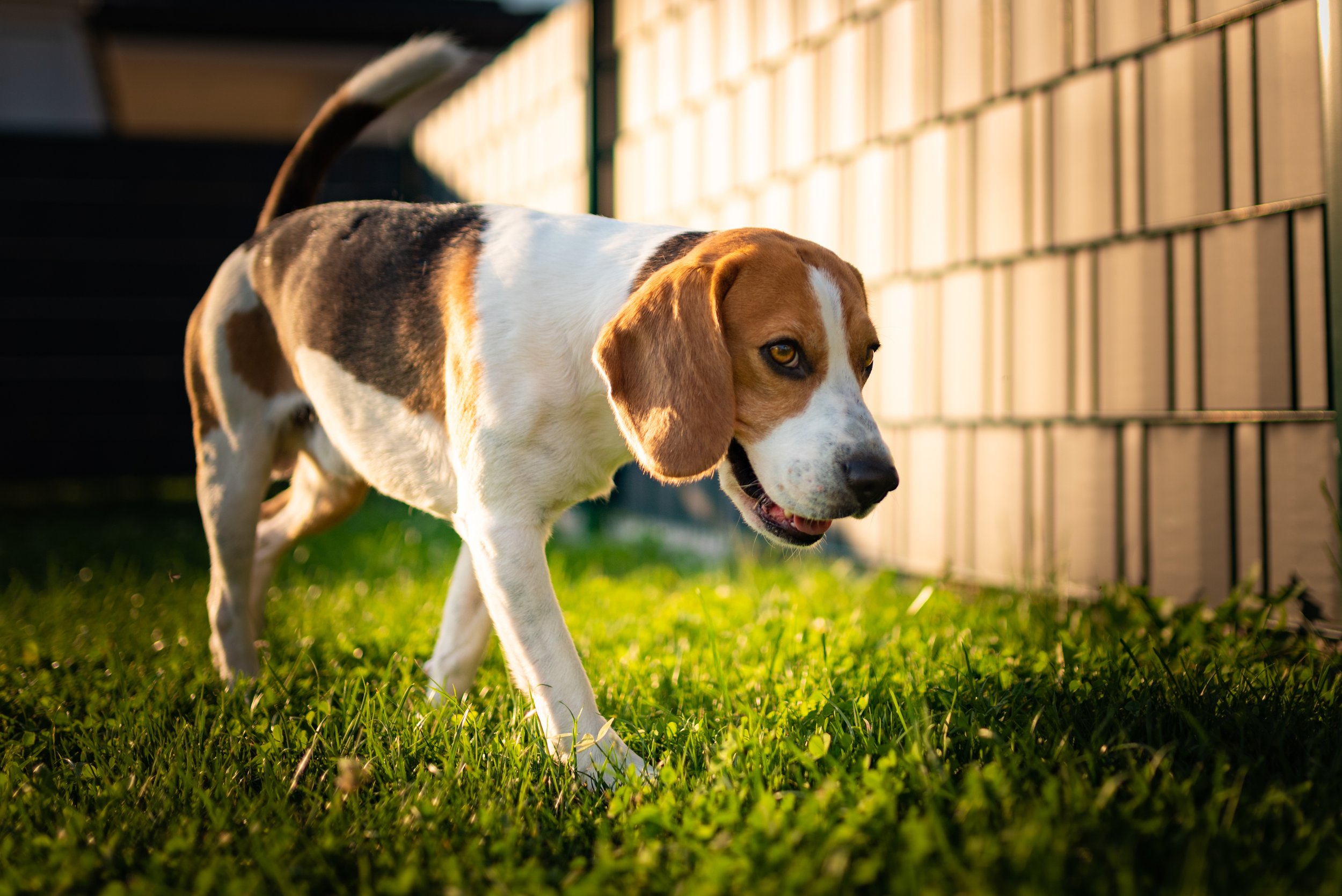Are Backyard Dog Runs Good for Dogs?
A dog run is an area that keeps a dog confined but gives them room to run safely without its owner present. Often it is a fenced-off section of the backyard or a long tether.
With the right choices, a backyard dog run can offer the same safety and security for your pets in the fresh air as they would have in the house.
Benefits of Backyard Dog Runs
A backyard dog run can be beneficial for both owner and dog regardless of the breed or size.
For the owner
Dedicated space for potty-training which can reduce the amount of time training takes
Peace of mind that the dog is safe when it is outdoors.
Allows repair professionals the space to work in and around the home.
For the dog
It gives them their own space to relax away from strangers or high-energy situations.
Allows them to be outside rather than in the house when the family is outdoors
With the installation of a doggy door, potty breaks happen whenever the dog wants.
There’s less pressure to go outside and come back in.
Fenced vs. Unfenced Backyard Dog Runs
The only limit to a dog run is your imagination, available yard space, and of course, your bank account.
Dog runs come in two types: fenced and unfenced, which are also called tethered runs.
Fenced Dog Runs
The most commonly used dog runs are long and narrow with high fences, shade, and a type of ground covering for ease of cleaning.
A side yard can be converted to a dog run easily by adding a gate on either end.
Choose the style that will fit your yard and your dog’s needs the best. For instance, a small breed dog will need a smaller area and shorter walls than a larger, working breed dog.
If your dog likes to dig, you can teach the dog to dig only on command or install stone or cement to avoid tunneling out of the run.
Fenced dog runs may not have the same legal issues as unfenced ones, although they may require a permit before building can commence and may have to meet specific size regulations.
Unfenced
Not all dog runs rely on fencing to keep the dog safe and secure. Unfenced dog runs use a long line (also called a lunge line) connected to an anchor point.
Aerial, zip-line, or trolley-style dog runs are becoming popular options for energetic dogs that want to explore. These have a lunge-line that can be attached to a cable connected between two trees.
The line being off the ground helps prevent tangling and gives the dog the full space between the two trees to move about in.
Local animal control bylaws may restrict unfenced dog runs regarding how long a dog may be left outside alone.
Choosing the Right Dog Run
Do-it-yourself (DIY) ideas and blueprints are widely available online, and prefabricated runs only require that you level the ground and install fence posts to secure it.
Prefabricated dog runs usually use chain-link or picket fencing with wood supports. Mesh panels are also an option from livestock feed stores.
Installation is as easy as drilling holes for the posts or hiring a professional.
Aerial dog runs are available as a kit, or you can purchase the individual components for a low cost at a hardware store.
Ground cover
Grass won’t last for very long. Urine and playing will quickly damage it. Choose a material that can be cleaned or rinsed and won’t hurt a dog’s paws, like large-sized gravel.
Alternatives to grass include:
Artificial grass
Poured concrete
Pea gravel
Cedar chips
Shade
Trees or a suitable doghouse will provide the necessary shade and protection for your dog while they’re outside, but dogs should come inside during extreme weather and harsh temperatures.
Always have fresh water available for your dog outside and toys for them to play with.
Safety Considerations
Safety is a significant consideration for any backyard dog run since the dog will be outside without you, and they can’t run and hide from an enemy or the elements.
If wildlife, such as birds of prey or coyotes, are an issue in your area, ensure fenced dog runs are secure and covered. Never leave small dogs outside alone.
Final Thoughts
When used in combination with regular walks and plenty of time together, dog runs can be a great way to keep your pet safe without you holding a leash.
There are many benefits for the dogs that enjoy dog runs, but some dogs naturally will take longer to get used to it. If your dog has untreated separation anxiety, it may take even longer.
Consult a professional dog trainer if necessary, and keep time outside in the dog run short and fun.
Lastly, never treat a dog run as a punishment. It’s a fun and safe place to relax for your dog; that’s all for them, not a time-out. What would your dog think of a dog run, fenced or unfenced? Leave a note in the comments.

